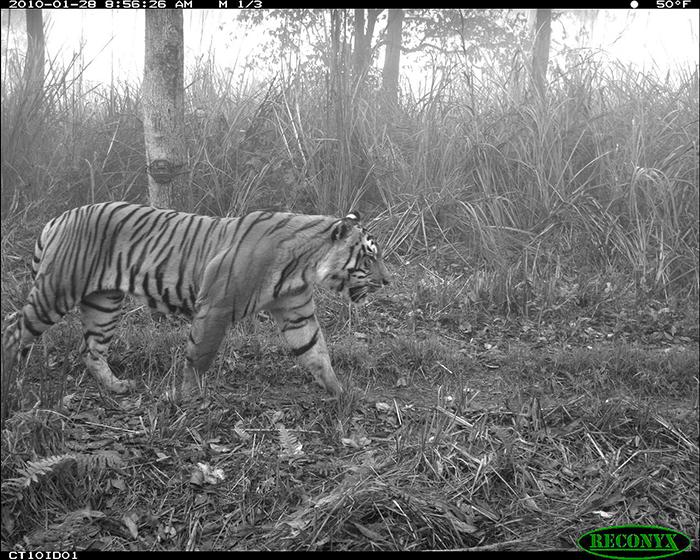
If you ask a conservationist, tigers are dangerously close to joining a disadvantageous list that includes the moa, dodo, blue antelope, and Atlas bear.
Tigers are at risk of extinction. In the past century, their populations have dwindled from approximately 100,000 to as low as 3,200 due to human pressures that include poaching and loss of habitat and prey from Asia’s massive urban and agricultural growth. In response, countries within tiger range and other partners have committed to working toward the goal of doubling tiger numbers by 2022.
Increased tiger numbers would safeguard a wealth of important ecological, economic, and cultural benefits. But, says SESYNC Postdoctoral Fellow Neil Carter, communities and governments will also need to be prepared for the escalated likelihood of human–tiger conflicts that could include tiger attacks on both people and livestock, as well as retaliatory killings of tigers.
Dr. Carter recently traveled to Nepal to participate in a meeting hosted by WWF’s Tigers Alive Initiative focused on understanding and tackling human–tiger conflicts. He presented his research on attitudes towards tigers in Nepal’s Chitwan National Park—including the role of demographic and socioeconomic factors in influencing attitude—and his work modeling and mapping those attitudes.
“WWF and other conservation organizations want to figure out where to target their education programs or interventions to the highest benefit,” Dr. Carter said. “So they probably want to target areas of greatest need—those with very negative attitudes towards tigers. Simple but effective spatial statistics can be a helpful tool for showing locations of significant clusters of negative attitudes versus positive attitudes, thereby providing a roadmap for focusing efforts.”
Each of WWF’s offices in countries within tiger range runs tiger-specific programs, but the organization is working towards developing range-wide strategies for tiger conservation and conflict mitigation. It’s an obvious challenge when dealing with locations as geographically, economically, and culturally diverse as Bhutan, China, Cambodia, India, Indonesia, Laos, Malaysia, Nepal, Russia, Thailand, and Vietnam.
There is no one-size-fits-all solution to predict, mitigate, and prevent human–tiger conflicts. However, the common thread amongst these countries is a growing emphasis on involving local communities.
“Understanding human–tiger conflict is about much more than just the numbers of tigers and prey in an area,” said Dr. Carter. “The social perceptions, attitudes, and tolerances of community members are a key driver of whether they will retaliate against tigers or how well they will work with conservation agencies and support conservation policies, for example.”
The meeting resulted in the creation of a WWF working group that will develop a human–tiger conflict pilot program and strategy, as well as raise the necessary funds to implement it on the ground over the next 18 months.
The National Socio-Environmental Synthesis Center, funded through an award to the University of Maryland from the National Science Foundation, is a research center dedicated to solving complex problems at the intersection of human and ecological systems.